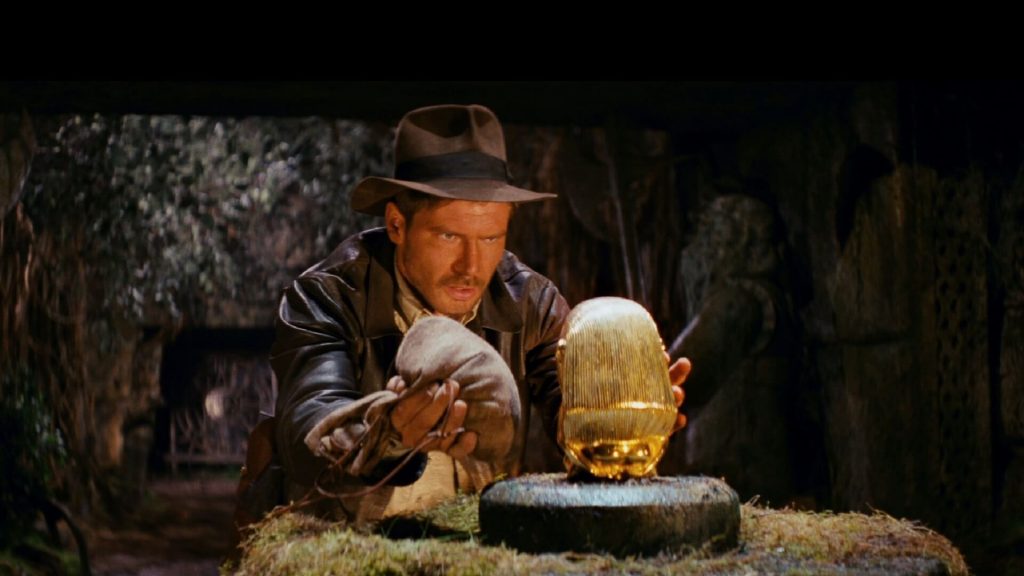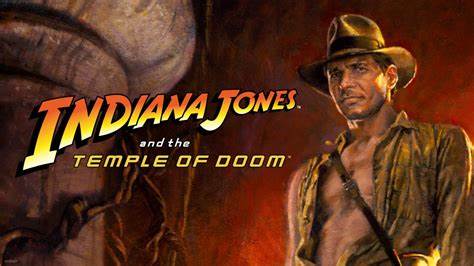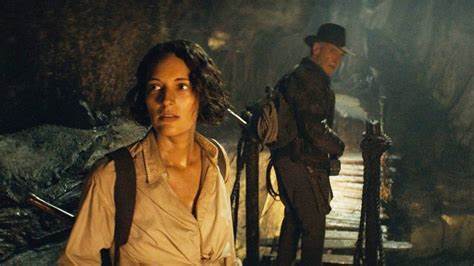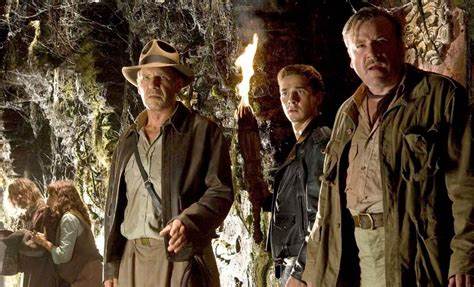As one of the most iconic partnerships in film history, Steven Spielberg and Harrison Ford have left an indelible mark on the Indiana Jones series. While Spielberg’s name is synonymous with directing classics, Ford has become inseparable from his portrayal of the intrepid Dr. Henry Jones, Jr. Across the franchise’s longevity. Spielberg directed four Indiana Jones films, a remarkable feat. Meanwhile, Ford has brought the character to life five times, including the recent installment, Indiana Jones and the Dial of Destiny. With James Mangold’s highly anticipated entry hitting theaters, let’s embark on a journey through the entire Indiana Jones filmography, ranking each movie from best to worst.
Raiders of the Lost Ark – 1981

From its very first moments, Raiders of the Lost Ark establishes its iconic status. With the introduction of the hat, the whip, and the thrilling chase scene with the rolling ball, the film immediately captivates audiences. Dr. Jones, played brilliantly by Harrison Ford, effortlessly transitions from his daring adventures to the lecture hall, where he mesmerizes students with his archeological expertise. The film’s winning formula is enhanced by Steven Spielberg’s masterful direction, showcasing his unrivaled ability to capture awe-inspiring moments on camera. The cinematography by Douglas Slocombe expertly employs contrast to enhance the visual appeal, while John Williams’ unforgettable score further elevates the film’s impact. It comes as no surprise that even on its opening weekend, critics hailed Raiders of the Lost Ark as a blockbuster masterpiece.
Indiana Jones and The Last Crusade – 1989

The third installment of the original Indiana Jones trilogy is a delightful culmination in numerous aspects. It provides a glimpse into Indy’s origins through a stellar opening sequence featuring River Phoenix. The film also presents a refreshing take on Indy’s love interest, portraying her as a femme fatale. The climactic sequence showcases one of the most impressive tombs in the series. Notably, Sean Connery’s portrayal of bookish medievalist Henry Jones Sr. adds a unique dynamic to the film. Rather than being a mere older version of Indy, Connery’s character is a scholar who relies on his intellect, offering a contrast to Indy’s impulsive nature. The beautiful moment where Indy finally grasps his father’s true character, as seen in Connery’s clever use of an umbrella, leaves a lasting impact. Director Steven Spielberg captures this scene with heartfelt precision, allowing even the most emotionally distant viewers to connect with the characters.
Indiana Jones and the Temple of The Doom – 1984

Temple of Doom manages to captivate audiences with its enjoyable elements, yet it falls short of being truly beloved. While the second half delivers exhilarating summer thrills, the screenplay fails to match the quality of its predecessors in the original trilogy. Despite its flaws, Indiana Jones and the Temple of Doom offers a thrilling and action-packed adventure. The film lacks a significant character arc for Indy, diminishing the potential for compelling drama. While there is a brief moment of brainwashing, it fails to provide genuine conflict. The narrative’s positioning as a prequel to Raiders of the Lost Ark aims to explain the absence of certain elements, but it undermines Indy’s journey of becoming a believer in the supernatural. Spielberg compensates for these shortcomings by injecting the film with a plethora of gritty and exhilarating moments, making it an undeniably enjoyable action-adventure experience. Despite its narrative missteps, Temple of Doom remains a standout entry in the Indiana Jones franchise, warranting a recommendation for fans of thrilling escapades.
Indiana Jones and The Dial of Destiny – 2023

Indiana Jones and the Dial of Destiny delivers a solid experience overall. The script successfully provides emotional depth for Indy, surpassing Crystal Skull in this regard. The villains are more compelling and enjoyable as well. While opinions may vary on Phoebe Waller-Bridge’s character, the shared self-destructive nature of Indy and her character, driven by their respective losses, resonates powerfully. It is refreshing that their emotional journey doesn’t rely on explicit onscreen conversations. However, the film falters in its inconsistent handling of digital effects, particularly in the first act. Scenes featuring a de-aged Ford in a World War II preamble and certain shots of Indy on horseback during an early parade chase suffer from uncanny valley moments.
Indiana Jones and the Kingdom of Crystal Skull – 2008

Indiana Jones and the Kingdom of the Crystal Skull kicks off with a poorly rendered CG groundhog, setting the stage for a disappointing cinematic experience. Despite recent reappraisals suggesting a softened view since its 2008 release, the film fails to live up to expectations. While the opening scene featuring Indy surviving a nuclear blast may appear silly, its real flaw lies in how it undermines the film’s attempt to explore Indy’s vulnerability and fallibility. Rather than embracing his aging and navigating the world without the guidance of his father or confidant, Indy remains inexplicably invincible throughout the story. Only the initial Area 51 set piece and a brief bike chase at the college manages to evoke the anticipated Spielberg thrills, as the rest of the film becomes overwhelmed by excessive green-screen usage and excessive computer-generated monotony.


















